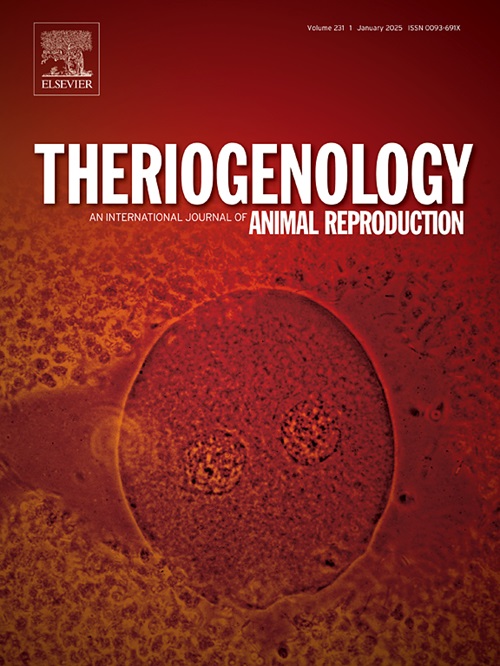公牛精子形态评价的人工智能系统评价
IF 2.4
2区 农林科学
Q3 REPRODUCTIVE BIOLOGY
引用次数: 0
摘要
公牛精子的形态特征通常使用明光显微镜进行目视评估,根据牛科学会(SFT)提出的公牛育种健全性评估(BBSE)指南。然而,分析是耗费人力的,需要有经验的人员才能获得可靠的结果。然而,人工授精行业越来越多地要求对年轻公牛实施基因组选择计划。因此,越来越需要一种更加标准化的技术来分析精液质量,特别是评估影响精液冷冻适宜性和受精能力的精子异常。因此,利用神经网络,特别是YOLO网络,开发了一种用于显微镜下精子图像自动分类的人工智能(AI)算法,该算法基于卷积神经网络(cnn),能够通过图像分割从复杂的视觉数据中学习并提取相关特征。目的是评估算法在显微镜下获得的图像中识别精子细胞的能力,建立它们的生存能力,并根据仅包括正常或主要/次要缺陷类别的简化方案对形态进行分类。该数据集包含8243幅图像,这些图像被标记和注释了边界框,以允许分割算法学习。该算法获得的性能显示准确率为82%,尽管并非对所有类别都观察到(排除准确率达到100%的可能过拟合情况),并且在精子形态的正确分类中准确率为85%。因此,结果证实了该算法在公牛精液分析中的潜在适用性,而不排除其未来实现以实现最佳性能。本文章由计算机程序翻译,如有差异,请以英文原文为准。
Evaluation of an artificial intelligence system for bull sperm morphology evaluation
The morphological characteristics of bull spermatozoa are usually evaluated visually using bright-field microscopy according to the guidelines proposed by the Society for Theriogenology (SFT) for the Bull Breeding Soundness Evaluation (BBSE). However, analysis is labor consuming and requires experienced personnel to obtain reliable results. Nevertheless, the artificial insemination industry increasingly demands the implementation of genomic selection schemes for young bulls. Hence, there is a growing need for a more standardized technique to analyze semen quality, particularly for the evaluation of spermatozoa abnormalities that affect semen freezing suitability and fertilizing capacity. Therefore, an Artificial Intelligence (AI) algorithm for the automated classification of microscope-acquired images of spermatozoa was developed using neural networks, specifically YOLO networks, based on convolutional neural networks (CNNs) that were able to learn and extract relevant features from complex visual data through image segmentation. The aim was to assess the algorithm ability to identify sperm cells in microscope-acquired images, establish their viability and to classify morphology based on a simplified scheme which included only normal or major/minor defect categories. The dataset comprised 8243 images, which were labeled and annotated with bounding boxes to allow the segmentation algorithm to learn. The performance obtained by the algorithm showed an accuracy of 82 %, although it was not observed for all classes (excluding a probable case of overfitting where accuracy reached 100 %), and a precision of 85 % in the correct classification of spermatozoa morphology. Results thereby confirmed the potential applicability of the algorithm in bull semen analysis without excluding its future implementation for achieving optimal performance.
求助全文
通过发布文献求助,成功后即可免费获取论文全文。
去求助
来源期刊

Theriogenology
农林科学-生殖生物学
CiteScore
5.50
自引率
14.30%
发文量
387
审稿时长
72 days
期刊介绍:
Theriogenology provides an international forum for researchers, clinicians, and industry professionals in animal reproductive biology. This acclaimed journal publishes articles on a wide range of topics in reproductive and developmental biology, of domestic mammal, avian, and aquatic species as well as wild species which are the object of veterinary care in research or conservation programs.
 求助内容:
求助内容: 应助结果提醒方式:
应助结果提醒方式:


